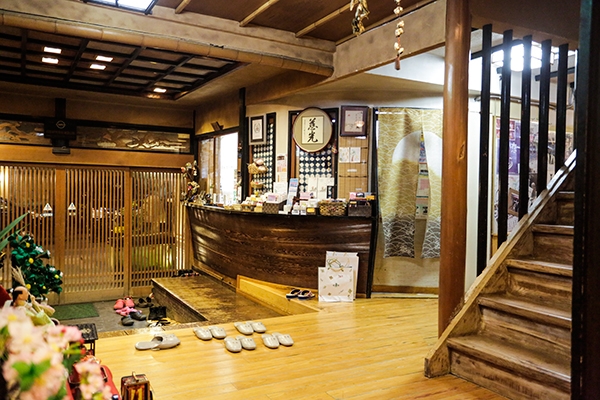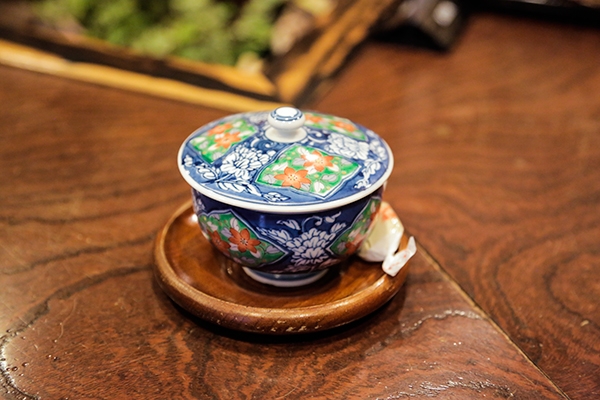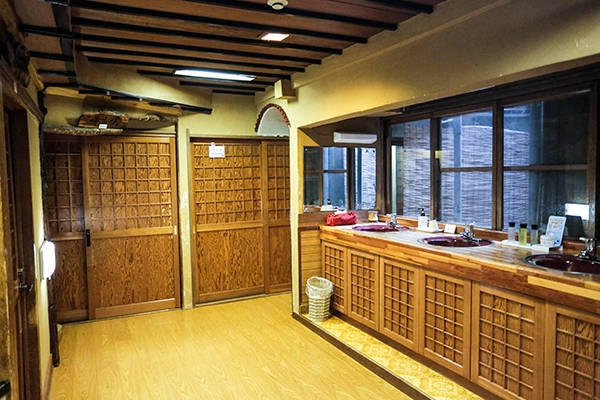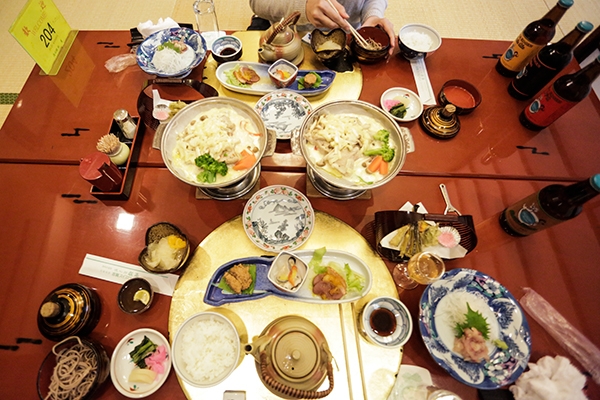
11 Aug Staying in a Japanese Ryokan in Shibu Onsen
Staying in a traditional ryokan is just one of those quintessential Japanese experiences that you can’t miss when exploring Japan. A ryokan is a traditional Japanese inn, typically with tatami-matted rooms, sliding doors and communal baths. It is common courtesy to remove your shoes and change into slippers upon entering a ryokan. While there may be a lot of rules that come with staying at a ryokan, we were welcomed with open arms and the owner showed us the ropes with helpful explanations.

In our experience, staying at a ryokan was like staying at the equivalent of a quaint bed and breakfast, or maybe even more accurate, it felt like we were spending the night at the home of a friend.

There are many different varieties of roykan, from basic to modern to traditional to luxury, and no two are alike. We spent the night at a moderately priced ryokan in Shibu Onsen—it was adorable and had such a homey and welcoming feel.

We arrived at our inn, Senshinkan Matsuya, prior to check-in time, so we dropped off our luggage and made our way to visit the snow monkeys. Upon our arrival to check-in, we switched from our shoes to slippers, were treated to a warm glass of tea and then shown to our room where our luggage was ready and waiting for us.

After a quick rundown on the features of the room, we were given a quick tutorial on how to properly dress in our yukata. Since Shibu Onsen is a hot spring town, both residents and tourists alike, walk around town in their yukata and geta (robes and wooden shoes) on their way to and from the onsen.



Guests staying overnight in Shibu Onsen are given a key access to all nine of the onsen in town—day trippers can only visit onsen #9, so if you want to visit more than one of the onsen, you need to spend the night in town. We didn’t have enough time to visit the public onsen, but I did check out the onsen in the basement of our ryokan. I went for a dip late at night before going to bed and had the place to myself. It was so relaxing and really helped me warm up after a chilly day.

The bathrooms are communal (don’t forget to switch to bathroom slippers when you go in) and there are no showers, but there are onsen as I mentioned above. Although some ryokan may have private bathrooms, shared bathrooms are typical. There are several that have private onsen on their balconies, though!


Many ryokan stays include dinner and breakfast, and ours was no exception. Dinner was in the basement dining room and we were served a huge variety of dishes—we had salad, soba noodles, soup, a chicken dish, sushi, and a number of other dishes. Breakfast was the same way—we had a mix of western food and traditional Japanese dishes such as eggs, soup, and salad to name a few. Even though we weren’t fans of every single dish we were served, overall they were both fantastic meals prepared by a wonderful chef!



Many o f the ryokan in Shibu Onsen take reservations only by email or phone, but I actually booked our room at Senshinkan Matsuya through booking.com. We paid approximately $180 for the night, but even though I booked the room online, we had to pay in cash upon arrival. The price for the night wasn’t exactly cheap, but it was much more affordable than most of the other ryokan in Shibu Onsen, and it included both breakfast and dinner. In my mind, it was worth the splurge, well, splurge for us anyways!


I’m so glad we had the chance to stay in a traditional Japanese ryokan. We loved sleeping on the floor mats, the kotatsu table was a wonderful and cozy spot to relax in the room and having the chance to take a dip in the onsen made it a night we will always remember!
Have you ever stayed in a ryokan? What’s your favorite type of accomodation?

